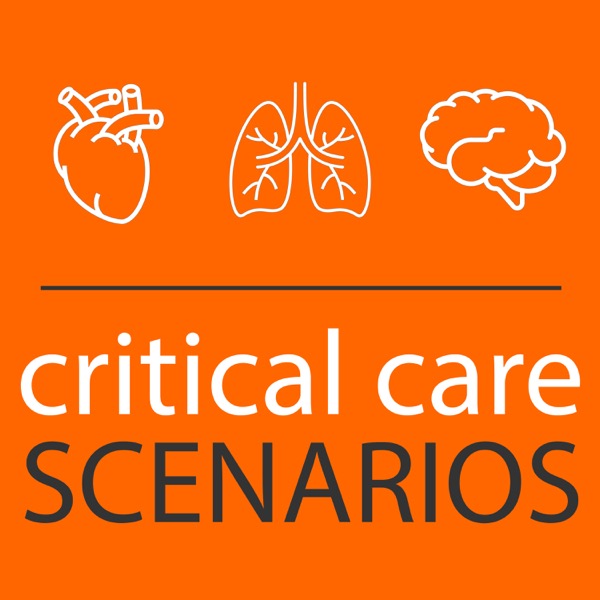Episode 86: EEGs in the ICU with Carolina Maciel
Critical Care Scenarios - A podcast by Critical Care Scenarios - Wednesdays

Categories:
We discuss the basics of EEG in the ICU, including when to do it, selecting the appropriate study, and the basics of bedside interpretation, with Carolina B Maciel, MD, MSCR, FAAN, triple boarded in neurology, neurocritical care, and critical care EEG. Learn more at the Intensive Care Academy! Find us on Patreon here! Buy your merch here! Takeaway lessons * There is little to no role for a very short (<2 hour) EEG in the critically ill patient, who generally has “less of everything”; to determine the presence of seizure activity or other electrical disease, more data is usually necessary. * Long-term or continuous EEG is usually defined as >12 hours. 2-12 is a middle ground (both clinically and for billing purposes). In most ICU cases, a “middle” study of a few hours can be done, then the findings used to inform the need for a longer study; validated scores exist for this, such as 2HELPS2B. * Don’t forget the non-seizure diagnoses that can be made/supported from EEG, such as brain death, cefepime-induced encephalopathy, sudden clinical changes due to osmotic shifts, etc. In reality, EEG readers, particularly in the community, may or may not be making great efforts to appreciate these things. You will get better reads if you communicate your questions to the reader, and consulting neurologists/neurointensivists may be able to glean more from a non-specific EEG report as well. Critical care EEG folks like Carolina may be the most helpful, but there are very few training programs for this. * Basic filters on the EEG include the high and low pass filters (should be LFF of 1 hz, HFF ~7–8 hz), and potentially a notch filter for 60 hz (in the US) or 50 hz (in Europe) to filter out AC electrical noise. * Dark vertical lines on the strip occur every 1 second. With normal scale there should be about 3 centimeters (around your thumb’s length) between them. * Odd numbered leads are on the left side of the head. Even numbers are on the right. Z-numbered leads are in the sagittal midline. * Do you see intermittent bursts of something pointy, like it will hurt to sit on? These may be muscular artifact, which can be hard to distinguish (look at the patient to see if they’re moving/twitching), but if not, this may be an epileptic discharge; similar to a PVC, or someone coughing in the symphony audience, it’s an inappropriate interruption in brain activity. This may be focal or global (all leads), and focal may be higher risk. They may be repetitive, occurring somewhat regular intervals, which are also more concerning. Ultimately, the concern is always whether they are going to evolve/organize into full seizures, so if no evolution ever occurs, that is also more reassuring. * When to treat epileptogenic discharges on EEG is always a judgment call and must be put in context of the patient. More abundant discharges with a more malignant appearance are more concerning, but the clinical correlation matters too; EEG findings with no clinical correlate are less worrisome. Convulsive seizures are a medical emergency (especially with continuous tonicity), but non-convulsive electrical activity, even non-convulsive status, usually has room and time to weigh the risks versus the benefits of therapy. Talk to experts and make a thoughtful decision. * Carolina hates fosphenytoin due to the cardiotoxi...
